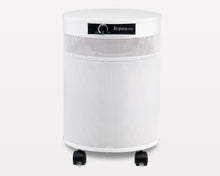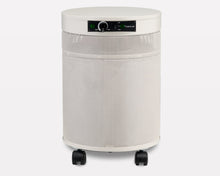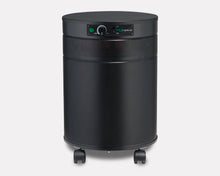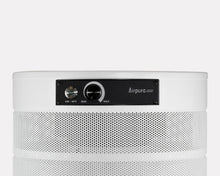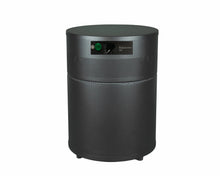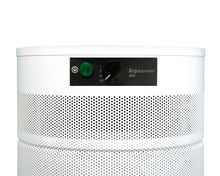Beyond Dander: How Commercial-Strength Air Purifiers Tackle Mold Spores for Home Allergy Sufferers

If you're one of the millions of Americans dealing with severe mold allergies, you already know that traditional cleaning methods only scratch the surface. While most allergy discussions focus on pet dander and pollen, mold spores present a unique challenge that demands a more powerful approach. That's where commercial-strength air purifiers step in, offering the kind of robust filtration that can make a real difference in your daily comfort and long-term health.
The Hidden Threat: Why Mold Spores Are Different
Mold spores aren't just another allergen—they're microscopic survivors that can remain airborne for hours and reproduce rapidly in the right conditions. Unlike pet dander, which tends to settle on surfaces, mold spores are remarkably persistent in the air, ranging in size from 1 to 30 microns. This means that while some spores are large enough to be caught by standard filters, many of the most problematic ones fall into that tricky range that requires serious filtration power.
What makes mold particularly challenging for allergy sufferers is its ability to trigger both immediate reactions and contribute to long-term respiratory issues. When you're dealing with severe mold allergies, every breath in a contaminated environment can mean symptoms like sneezing, congestion, skin irritation, and in more serious cases, respiratory distress.
The Science Behind Effective Mold Removal
Here's where the research gets interesting. True HEPA (High Efficiency Particulate Air) filters are designed to capture 99.97% of particles that are 0.3 microns or larger—and this specification isn't arbitrary. The 0.3-micron threshold represents the "most penetrating particle size," meaning particles at this size are actually the hardest to capture. Particles both smaller and larger than 0.3 microns are caught more easily due to different physical mechanisms.
For mold spores, this is excellent news. The HEPA standard is based on the ability to remove 99.97 percent of particles that are 0.3 microns in size or greater. Large particles would theoretically be trapped by a HEPA filter, as the majority of mold spores are larger than 0.3 microns. This means that a properly functioning HEPA filter can effectively capture most mold spores circulating in your home's air.
However, not all air purifiers are created equal, and this is where commercial-strength units shine over their consumer-grade counterparts.
Why Commercial-Strength Makes the Difference
Commercial-strength air purifiers bring several advantages that matter when you're dealing with severe mold allergies:
Superior Air Exchange Rates: While a typical home air purifier might process the air in a room 2-3 times per hour, commercial units often achieve 6-8 air changes per hour or more. This means mold spores have less time to settle or reproduce before being captured.
Robust Motor Systems: Commercial units are built to run continuously without the wear and performance degradation that can affect lighter-duty models. When you're managing severe allergies, consistent performance isn't a luxury—it's a necessity.
Advanced Multi-Stage Filtration: Many commercial-strength purifiers don't rely solely on HEPA filtration. They incorporate pre-filters to catch larger particles, activated carbon stages to address odors and mycotoxins (toxic compounds produced by some molds), and sometimes additional technologies like UV-C sterilization.
Higher Volume Processing: Commercial units are designed to handle larger spaces and higher particle loads, which means they're not overwhelmed by typical home mold spore concentrations the way smaller units might be.
Choosing the Right Commercial-Strength Solution for Your Home
When you're selecting a commercial-strength air purifier for mold spore control, several factors deserve your attention:
Room Size and Air Exchange: Calculate not just your room size, but consider ceiling height and any factors that might increase mold spore concentration, such as proximity to basements, bathrooms, or areas with moisture issues.
True HEPA Certification: Look for units with genuine HEPA filters, not "HEPA-type" or "HEPA-like" alternatives. To ensure their effectiveness, it is important to look for true HEPA filters that meet the standards of removing 99.97% of particles of 0.3 microns or larger.
Maintenance Requirements: Commercial-strength units typically have more robust filters that last longer, but they also require proper maintenance schedules. Factor in the cost and availability of replacement filters when making your decision.
Additional Features: Consider units with activated carbon filters for mycotoxin control, UV-C sterilization for added microbial control, and smart sensors that can adjust operation based on detected particle levels.
Real-World Performance: What to Expect
Setting realistic expectations is important. Even the most powerful air purifier works best as part of a comprehensive mold management strategy. While commercial-strength units can dramatically reduce airborne mold spore concentrations, they won't solve underlying moisture problems or eliminate mold growth at its source.
What you can expect is a significant reduction in airborne mold spores, which for many severe allergy sufferers translates to fewer symptoms, better sleep quality, and an overall improvement in daily comfort. Many users report noticing differences within the first few days of operation, particularly in terms of reduced nighttime congestion and morning allergy symptoms.
Integration with Your Overall Allergy Management Plan
A commercial-strength air purifier should complement, not replace, other mold management strategies. This includes controlling humidity levels (ideally between 30-50%), addressing any sources of moisture infiltration, ensuring proper ventilation, and regular cleaning with mold-preventing products.
The beauty of a commercial-strength approach is that it provides that extra layer of protection that can make the difference between managing your symptoms and truly controlling them. When your air purifier is powerful enough to keep up with mold spore challenges, you're not fighting a losing battle every day.
Making the Investment Work for You
Yes, commercial-strength air purifiers represent a larger upfront investment than typical home units. However, when you're dealing with severe mold allergies, the calculation includes factors beyond the initial price tag: potential reduction in allergy medications, fewer missed work or school days, improved sleep quality, and long-term respiratory health benefits.
Many users find that the combination of better performance and longer-lasting commercial-grade components actually makes these units more cost-effective over time. When a unit is built to run continuously for years rather than months, the per-day cost often works out favorably.
The Bottom Line
For severe mold allergy sufferers, commercial-strength air purifiers offer capabilities that consumer-grade units simply can't match. The combination of higher air exchange rates, robust filtration systems, and continuous-duty performance can transform your indoor air quality in ways that make a real difference to your daily life.
The key is choosing a unit that matches your specific needs and integrating it into a comprehensive mold management approach. When you get the match right, you're not just buying an appliance—you're investing in the kind of air quality that can help you reclaim comfort in your own home.
Remember, severe mold allergies don't have to dictate your quality of life. With the right tools and approach, you can create an indoor environment that supports your health rather than challenging it every day.

